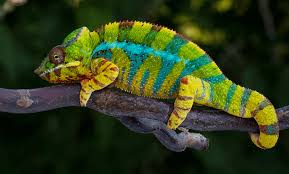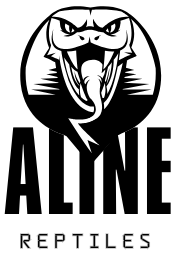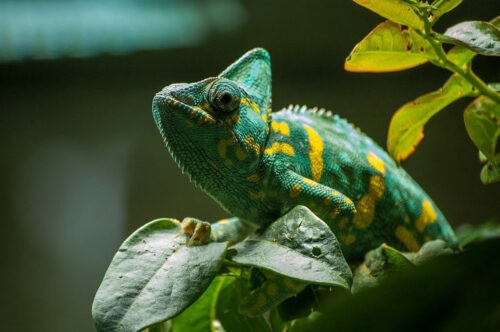Chameleons are among the most captivating reptiles, admired for their color-changing abilities and quirky personalities. However, owning one requires more than just an appreciation for their unique appearance. The costs involved in keeping a chameleon can vary greatly depending on factors like species, habitat setup, and ongoing care requirements. So, how much does a chameleon cost, and is it an affordable pet choice for you?
In this guide, we’ll break down the costs associated with purchasing and caring for a chameleon, from initial setup to long-term expenses, and give you all the information you need to make an informed decision. If you’re considering adding a chameleon to your family, keep reading to ensure you’re financially prepared for the responsibility!
How Much Does a Chameleon Cost?

Before considering the long-term expenses, it’s important to understand the initial investment required to acquire a chameleon. The price of purchasing a chameleon can vary depending on factors like species, age, and where you buy it from.
Common Species:
Certain species of chameleons are more readily available and affordable. These are typically easier to care for, making them a great choice for beginners:
| Species | Price Range | Average Cost | Notes |
|---|---|---|---|
| Veiled Chameleon | $30 – $80 | $50 | Great for beginners, hardy species |
| Panther Chameleon | $100 – $300 | $150 | Known for vibrant colors, more expensive |
| Jackson’s Chameleon | $50 – $150 | $100 | Smaller and hardy, less costly |
Rare or Exotic Species:
If you’re interested in more exotic species, like the Parson’s chameleon, the price can skyrocket. These species are often harder to find and come with a higher price tag:
| Species | Price Range | Average Cost | Notes |
|---|---|---|---|
| Parson’s Chameleon | $300 – $600 | $450 | Large and rare, highly sought after |
| Meller’s Chameleon | $150 – $400 | $250 | Requires more specialized care |
| Veiled Chameleon (Rare Morphs) | $100 – $200 | $150 | Color variations increase price |
The cost of a chameleon will generally depend on its species, where you buy it from (pet store vs breeder), and whether the chameleon is a rare or common variety.
Setup and Equipment Costs
Once you’ve purchased your chameleon, the next step is creating a suitable environment for it. Chameleons are arboreal reptiles, meaning they live in trees and need an enclosure that mimics their natural habitat. This includes UVB lighting, heating, appropriate humidity levels, and the right substrate.
Enclosure Costs:
A proper enclosure is crucial for your chameleon’s health. Here are the options for enclosures based on size and material:
| Enclosure Size | Price Range | Average Cost | Notes |
|---|---|---|---|
| Small (20-30 gallons) | $50 – $150 | $100 | Suitable for younger chameleons |
| Medium (30-60 gallons) | $100 – $250 | $175 | Ideal for adult chameleons |
| Large (60 gallons +) | $150 – $400 | $250 | Best for larger species like Parson’s |
Lighting and Heating:
Chameleons need a proper lighting setup, including UVB lights for calcium metabolism and basking bulbs for warmth. Here’s what you might need:
| Item | Price Range | Average Cost | Notes |
|---|---|---|---|
| UVB Light | $20 – $50 | $35 | Crucial for calcium absorption |
| Basking Lamp | $15 – $40 | $30 | Provides heat for basking areas |
| Temperature Regulator | $10 – $25 | $18 | Ensures stable temperatures for your chameleon |
Substrate and Décor:
Chameleons are known for climbing and hiding in their environments. It’s essential to provide them with the right substrate and décor to ensure they feel secure and comfortable:
| Item | Price Range | Average Cost | Notes |
|---|---|---|---|
| Substrate (Coconut Fiber, Soil) | $10 – $30 | $20 | Safe for chameleons and easy to clean |
| Live Plants | $10 – $50 | $30 | Aesthetic and provides hiding spots |
| Branches and Vines | $5 – $20 | $15 | Vital for climbing and hiding |
Total Setup Costs:
- Basic Setup: For a smaller chameleon like a veiled chameleon, you could expect to spend around $200 – $400.
- Advanced Setup: For more exotic species like the Parson’s chameleon, the total setup might cost between $400 – $600.
Ongoing Costs for Care and Maintenance

Owning a chameleon doesn’t stop at purchasing and setting up their habitat. There are ongoing costs that you’ll need to plan for to ensure your chameleon stays healthy and happy.
Feeding Costs:
Chameleons are insectivores, meaning they primarily eat live insects. The most common insects fed to chameleons are crickets, mealworms, and locusts. Here’s a breakdown of the typical monthly cost for feeding:
| Insect | Price per Month | Average Cost per Month | Notes |
|---|---|---|---|
| Crickets | $10 – $30 | $20 | Most common food, readily available |
| Mealworms | $10 – $25 | $18 | Easily stored and affordable |
| Locusts | $15 – $40 | $25 | Higher protein content, expensive |
In addition to the insects themselves, you’ll need to dust them with calcium and multivitamin powder. This typically costs around $10 – $20 per month.
Electricity Costs:
Running UVB lighting, basking lamps, and other necessary equipment to maintain proper temperature and humidity can add to your monthly utility bills. On average, you can expect to pay around $10 – $20 per month in electricity costs.
Healthcare and Vet Visits:
Like all pets, chameleons need occasional health checkups to ensure they’re not suffering from conditions like Metabolic Bone Disease (MBD) or parasites. Vet visits can cost anywhere between $50 – $100 per visit, and you may need to budget for any medications or treatments.
Other Potential Costs
Health Issues:
While chameleons are hardy pets when given proper care, they can occasionally fall ill. The cost of treating a sick chameleon can range from $50 to $200 depending on the condition and the type of treatment required. For more serious conditions, like a bacterial infection, you could incur higher costs.
Insurance:
Some chameleon owners opt to purchase insurance for their pets, which can help cover medical expenses in case of illness or injury. Pet insurance typically costs between $10 – $20 per month for reptiles.
Replacement Parts:
As your chameleon grows and ages, you may need to replace or upgrade some of the equipment in its enclosure. UVB bulbs, heating lamps, and water filtration systems may need to be replaced every 6 to 12 months, adding another $50 to $100 annually.
Total Cost Breakdown
To give you a better idea of what owning a chameleon might cost over time, here’s a summary of the costs you’ll face in the first year:
| Expense | Low Estimate | High Estimate |
|---|---|---|
| Initial Purchase | $30 | $600 |
| Setup and Equipment | $200 | $600 |
| Monthly Care (Food, Supplements, Electricity) | $50 | $150 |
| Annual Vet Visits | $50 | $100 |
| Total First-Year Cost | $330 | $1,450 |
How to Save on Chameleon Costs
While owning a chameleon can be expensive, there are ways to reduce some of the costs:
- Buy used equipment: Many reptile owners sell their used enclosures, lights, and accessories at affordable prices. Check online marketplaces for bargains.
- Buy in bulk: Purchase insects, supplements, and other essentials in bulk to save money over time.
- DIY enclosure: If you’re handy, you could make your own enclosure with inexpensive materials.
- Consider pet insurance: It may seem like an extra expense, but it can help cover medical costs down the line, saving you money if something unexpected happens.
Conclusion
Owning a chameleon can be a rewarding experience, but it’s important to be aware of the costs involved. From purchasing the chameleon itself to setting up the appropriate habitat, and covering ongoing feeding, electricity, and medical expenses, the financial responsibility adds up.
By carefully planning your budget and preparing for both initial and ongoing costs, you can ensure that your chameleon stays healthy, happy, and well-cared-for. The key to a successful chameleon ownership experience is making sure you’re ready for the financial commitment and that you’re fully aware of the expenses involved in keeping one of these incredible reptiles as a pet.
Now that you have a clear understanding of how much does a chameleon cost, you’re better prepared to make an informed decision.

